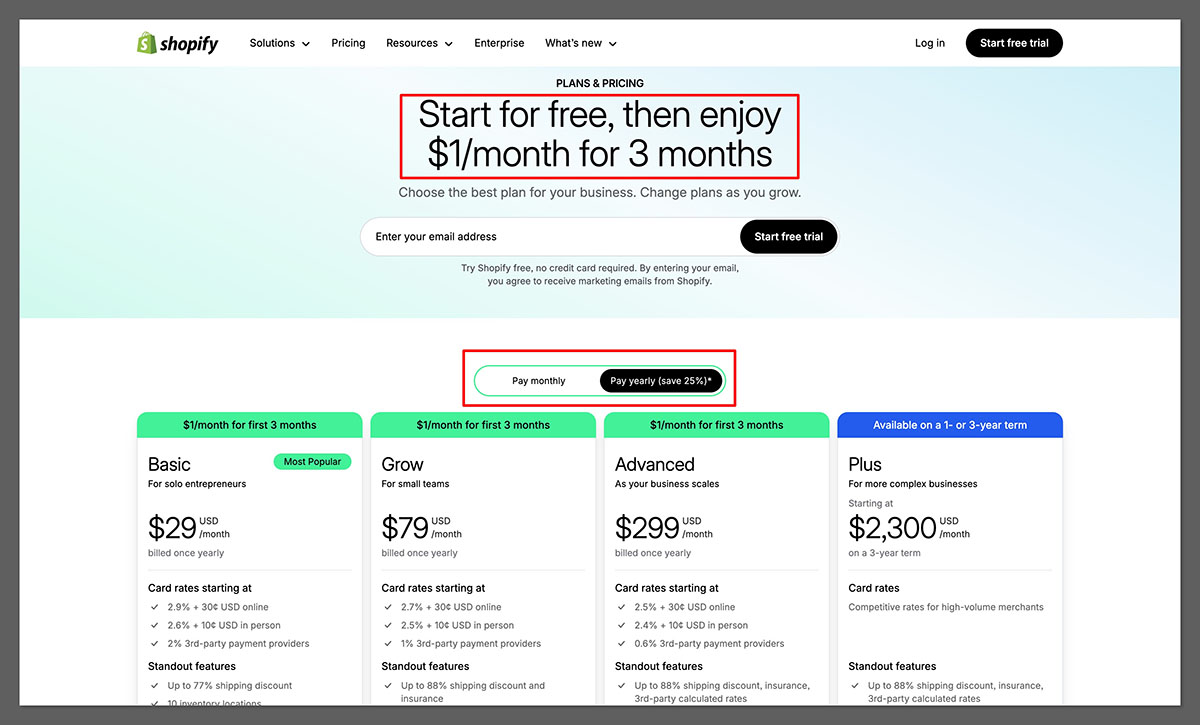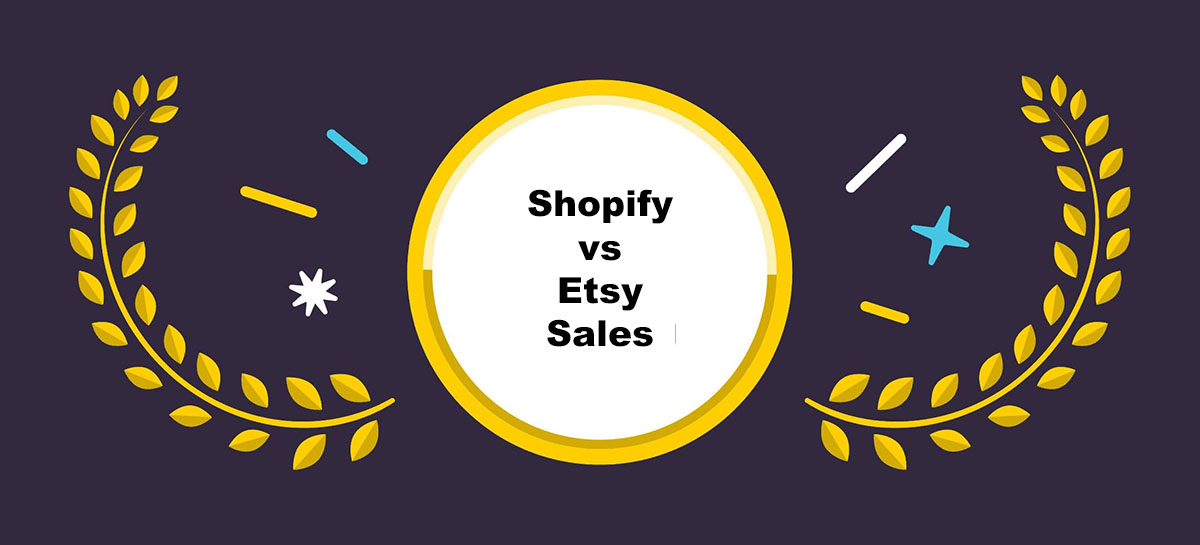I remember when I earned my first 100 sales. It didn’t happen overnight. These things rarely do. It took a few months of experimentation, long nights packing orders at my kitchen table, and more Etsy listing tweaks than I’d like to admit. But when that 100th order came in, it felt like validation.
Not from friends or family, but from strangers. People out there in the world found my handmade mugs and art prints, and decided, unprompted, that they were worth buying.
That’s an amazing feeling. Since I sell handmade products, I’ve used both Etsy and Shopify. So, when people ask me which one’s better, I say: depends on what you want, and how you want to work.
One of the main factors? How much money you actually want to keep from your sales.
Here, I’m going to break it all down for you – the fees, where your money disappears, and the trade-offs for both platforms beyond just profit.
It’s not just about dollars, it’s about energy, control, and how much effort you want to pour into each platform.
The Basics I Used to Compare Both
Before diving into the numbers, here’s the base scenario I used for this comparison. It’s based on a real 100-order period I experienced, using updated 2025 pricing, policies, and fee structures from both platforms.
This is what actually played out in my shop, and what many other creators have confirmed seeing as well. So, here’s what formed the basis of my comparison:
| Assumption | Value |
|---|---|
| Location | United States (USD) |
| Orders analysed | 100 |
| Item price | $30 |
| Shipping (paid by buyer) | $5 |
| Total per order | $35 |
| Shopify plan used | Basic ($39/month) |
| Payment processors | Shopify Payments, Etsy Payments |
Why $30 per product? Because that’s a sweet spot for a lot of handmade goods, in my opinion – mugs, prints, candles, accessories.
It’s high enough to leave margin after materials and shipping, but still impulse-buy territory. Why 100 orders? Because it’s just enough to feel real, without being out of reach for most new sellers.
Also worth noting: this is all U.S.-based pricing. If you’re selling from outside the States, your numbers might look different, especially with currency conversions, VAT, and international shipping headaches. But the structure of the comparison holds true.
Fees You Can’t Ignore: The Hard Costs
You don’t know what you’re actually earning from 100 sales, if you don’t know what you’re spending. Every platform has fees – yes, even Etsy.
Just sometimes, the fees show up in different ways. Here’s how it broke down for me:
| Fee Type | Etsy | Shopify (Basic) |
|---|---|---|
| Listing/subscription | $0.20 x 100 = $20 | $39 monthly |
| Platform transaction fee | 6.5% of $35 = $2.28 x 100 = $228 | 0% if you use Shopify Payments |
| Payment processing | 3% + $0.25 = $1.30 x 100 = $130 | 2.9% + $0.30 = $1.32 x 100 = $132 |
| Total | $378 | $171 |
| Effective Take Rate | 10.8% | 4.9% |
You might find this comparison surprising. I did. Most people think Etsy is going to be cheaper than Shopify.
They assume that because it’s free to set up an account, it’s the budget-friendly option for beginners. That’s not always the case.
Based on my experience, Etsy eats up more than double the amount of profit that Shopify takes from you. Etsy took $378 in fees. Shopify took $171.
That’s $207 more gone- money that could have gone toward supplies, better packaging, or even just paying yourself for your time.
I’m not saying Etsy is a villain here – stealing cash from hard workers. Their structure includes free traffic, a built-in audience, and infrastructure that helps new sellers get discovered.
But the moment your volume increases, the math starts working against you. You’re not just paying a flat fee; you’re paying more as you succeed. And it adds up faster than most people realize.
Also worth noting in 2025: Shopify’s improvements have made their pricing even more compelling. Shopify Magic now helps auto-generate product descriptions and marketing emails.
Shopify Inbox makes chatting with customers seamless. These little touches save time, and time is money.
But the Costs Don’t Stop There
Here’s where things get tricky. Some costs don’t show up until later, or aren’t directly labelled as fees. You might not notice them straight away, but they’re gradually eating into your profits. Let me break down what I’ve learned over time:
Etsy Brings the Crowd, But It Comes at a Price
Etsy’s “free traffic” isn’t as free as it seems. The company’s “Offsite Ads” are one of the biggest hidden costs of doing business on the platform.
Once your shop crosses $10,000/year in sales, you can’t opt out, either. If an offsite ad leads to a sale, Etsy instantly charges you 12-15% on top of the other fees.
That means one order can get hit with nearly 25% in fees before you ever see the rest.
Etsy makes all the decisions. Its algorithm decides who and what gets shown, which means you don’t get control over your own marketing, or how much it costs you.
Basically, Etsy becomes your marketing agency with no guarantee of return.
You don’t get to choose when they run ads, how they target, or what kind of traffic they attract. Sometimes it works.
Sometimes you pay 15% to convert a customer who would have found you anyway. Other times, your listings will suddenly vanish, and you’ll have no idea why.
Etsy controls the traffic, the exposure, and the experience. You’re essentially playing on rented land, and the rent can change overnight.
Shopify Gives You Control, But You Have to Build It
Shopify, on the other hand, gives you the land, but you have to build the house, pave the roads, and hang the signs.

You won’t pay offsite ad fees unless you choose to advertise – but that means you have to create and manage your own traffic sources.
That’s Instagram, TikTok, Pinterest, SEO, and (if you want to scale faster) paid ads. You become your own marketing team.
Then there’s the setup time. Shopify stores in 2025 are much easier to launch than a few years ago, thanks to drag-and-drop themes and AI-generated product copy, but there’s still a learning curve. Themes cost money.
Many apps have monthly fees. You might spend hours tinkering with fonts, navigation menus, shipping rules, and fulfillment tools.
So while Etsy eats your profit slowly and invisibly, Shopify demands your time up front. It’s a trade-off. You get control and lower fees, but only if you’re willing to take on the role of business owner, not just maker.
The Real Question: When Does Shopify Start Saving You Money?
There’s a moment in every seller’s journey when you look at your expenses and think, “Wait… how much did I just give Etsy?”
It creeps up on you, especially when things are going well. You’re grateful for the sales, so you don’t immediately question the cost of them.
But at some point, Shopify’s flat-rate system becomes a lot more attractive.
| Monthly Orders | Etsy Cost | Shopify Cost | Winner |
|---|---|---|---|
| 20 | ~$113 | ~$98 | Close call |
| 40 | ~$206 | ~$135 | Shopify by ~$71 |
| 60 | ~$298 | ~$171 | Shopify by ~$127 |
Here’s the mental shortcut I use:
If you’re consistently doing over 45 orders a month, Shopify is almost always cheaper in the long run.
Below that, Etsy might be slightly cheaper – particularly when you factor in the value of the built-in audience.
But once your shop has traction, Shopify puts more money in your pocket per sale. That difference can fund ads, packaging upgrades, or even let you pay yourself more.
When I crossed the 50-orders-a-month mark, I ran the numbers and realized Etsy was taking over $350/month from me.
Shopify was closer to $170. That extra $180 went straight into marketing, ironically, helping me grow faster.
When Etsy Makes Perfect Sense
I’m not here to argue that sellers shouldn’t be using Etsy. I still really like it as a platform. It’s where I got my start, and for many makers, it’s the smartest place to begin.
In fact, for a good chunk of sellers, it’s still the best option right now.
I think Etsy really makes sense if:
- You’re Just Getting Started: If you’ve never sold online before, Etsy is a beautifully simple place to begin. You don’t need a domain name, branding, or even a strategy. Just take a few great photos, write a compelling title, and you can start selling in an afternoon.
- You Sell Seasonal or One-of-a-Kind Products: Etsy shines with handmade, unique, or trend-driven products. If you’re doing limited edition items, vintage, or seasonal art drops, Etsy can provide quick, low-friction exposure. For example, I launched a limited run of Halloween mugs one year, and Etsy’s organic search and seasonal homepage promotions drove 70% of my sales.
- Tech, Themes, and Funnels Bore You: Some people just want to make beautiful things and not think about conversion rates, cart abandonment flows, or Facebook Pixel tracking. And that’s okay. If your joy is in the craft, Etsy lets you focus on what you love while still reaching a buying audience.
- The Community Calls You: Etsy’s social features: favorites, shop reviews, “star seller” badges, and so on, give new buyers a sense of trust. That trust turns browsers into buyers. Especially early on, those social signals are worth a lot more than they seem.
Etsy is the perfect set of training wheels. It’s where you can learn what people want, how price points work, which photos convert, and so on, without a lot of effort.
When Shopify Starts Feeling Like the Right Move
Etsy is great at first, but soon it starts to feel restrictive. You start thinking about branding, repeat customers, bundles, and maybe even your own domain name.
That’s the moment when Shopify starts calling your name. Shopify is the obvious upgrade if:
- You Want Control over the Customer Experience: On Shopify, everything from the homepage layout to your confirmation emails is yours. Want to offer a bundle with a 10% discount? You can. Want to change the color scheme, create a unique checkout flow, or send abandoned cart emails? Done. You can shape everything.
- Growth is the Way Forward: With Etsy, it often feels like every sale is a one-time transaction. With Shopify, each sale can be the start of a relationship. You can build email lists, create loyalty programs, design bundles, even offer subscription based products. That way, you end up with higher customer lifetime value.
- You Don’t Mind Learning: Shopify rewards curiosity. If you’re willing to get into the weeds of SEO, analytics, marketing funnels, and product development, you’ll love it here. It’s where ecommerce stops being just about craft, and starts being about systems.
- A Marketplace Just Isn’t Enough: If Etsy feels like playing someone else’s game, Shopify is your chance to design your own. When that starts to sound exciting instead of intimidating? That’s how you know it’s time to migrate.
If you want room to experiment and grow on your own terms, Shopify lets you do that.
The Smart Move: Run Both at the Same Time
It might sound like I’m trying to push sellers towards Shopify here – I’m not. You don’t actually need to choose one platform or the other – at least not right away.
Here’s what I do:
- Use Etsy for discovery: Post your bestsellers and test what works.
- Use Shopify for loyalty: Include a card in your Etsy packages that invites people to your Shopify store (offer perks, bundles, email list).
- Build an email bridge: Set up a simple welcome sequence to keep in touch and guide people to your own site.
- Treat it like an experiment: Run tests on both, and see what resonates.
Each platform has its strengths. You can build on both while keeping your eyes on the bigger picture.
Gut Check Time: Final Thoughts
At some point, you have to stop crunching numbers and ask how it all feels.
When I paused and really checked in with myself, I realized I loved the control Shopify gave me. But Etsy was easier in the beginning, and honestly, sometimes it still brings me quick sales with less effort.
Here’s what I’d recommend asking yourself:
- Do I want to build a brand or just sell?
- Do I want quick cash flow or long-term customer relationships?
- Where does the process feel more fun, less draining?
Let your body answer that. Your gut knows.
You can always test, adjust, and pivot. You’re not locked in. What matters is that your setup matches your goals, not someone else’s blueprint.






